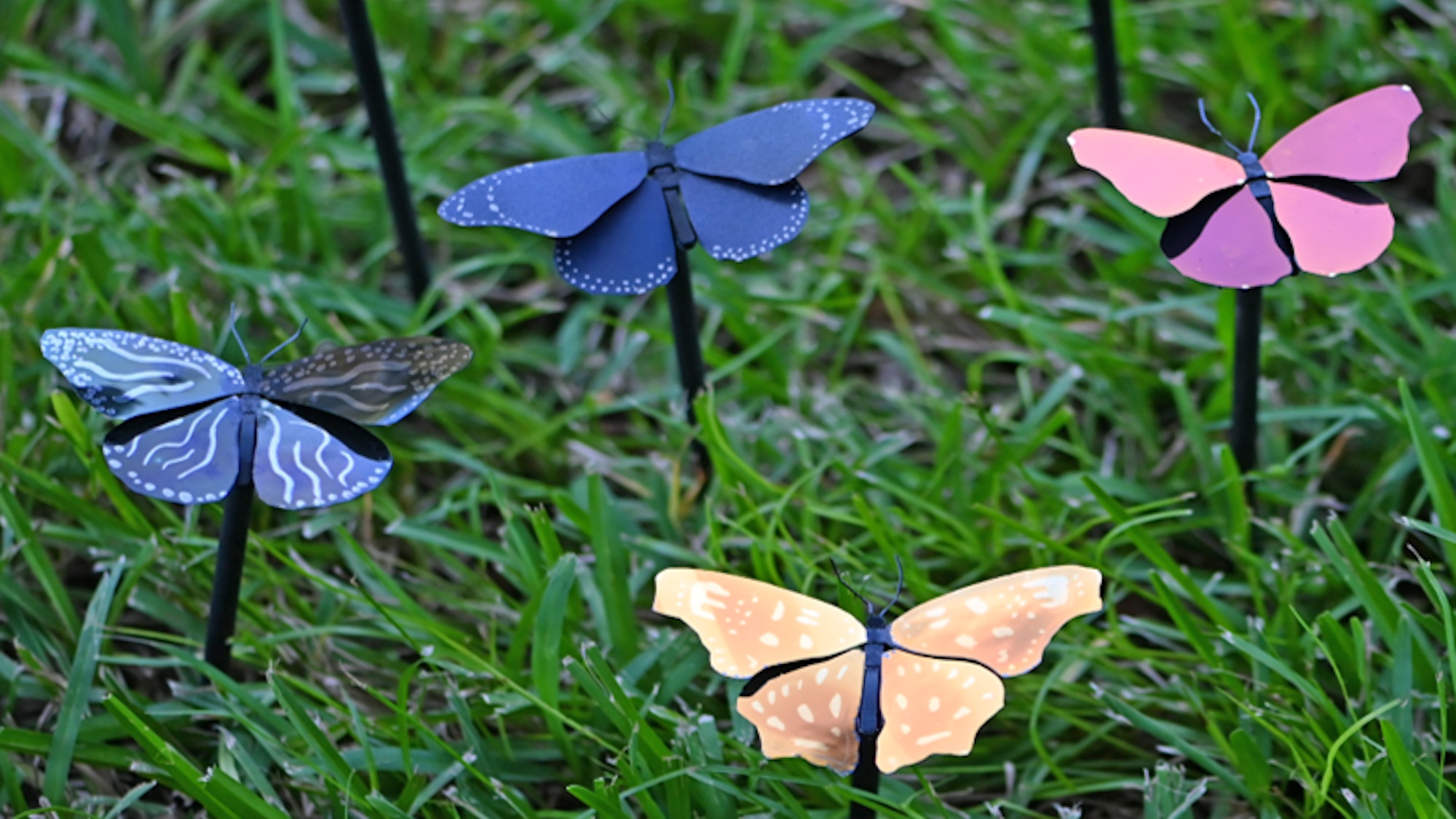

The exterior paint on a building is often a major factor in keeping their indoors appropriately warm or cool, and a lot of work goes into developing new concoctions to improve insulation. Unfortunately, the volatile organic compounds found in modern synthetic paint have been shown to have harmful effects on both the environment and humans. On top of all that, air conditioning still contributes to over 10 percent of all electricity consumption in the US. Thankfully, we have butterflies and squid.
Those species and others inspired a researcher at University of Central Florida’s NanoScience Technology Center to create an ultra-lightweight, environmentally safe “plasmonic paint.” The unique paint relies on nanoscale structural arrangements of aluminum and aluminum oxide instead of traditional pigments to generate its hues. As detailed in Debashis Chanda’s recent paper published in Science Advances, traditional pigment paint colorants rely on their molecules’ light absorption properties to determine colors. Chanda’s plasmonic paint, in contrast, employs light reflection, absorption, and scattering based on its nanostructural geometric arrangements to create its visual palettes.
[Related: Are monarch butterflies endangered in the US?]
“The range of colors and hues in the natural world are astonishing—from colorful flowers, birds and butterflies to underwater creatures like fish and cephalopods,” said Chanda in a statement on Wednesday. Chanda went on to explain that these examples’ structural color serves as their hue-altering mechanism, as two colorless materials combine to produce color.
Compared to traditional available paint, Chanda’s plasmonic version is both dramatically longer lasting, eco-friendly, and efficient. Normal paints fade as their pigments lose the ability to absorb light electrons, but plasmonics’ nanostructural attributes ensure color could remain as vibrant as the day it was applied “for centuries,” claimed Chanda.
A layer of plasmonic paint can achieve full coloration at just 150 nanometers thick, making it arguably the lightest paint in the world, and ensuring magnitudes less is needed for projects. Chanda estimated that just three pounds of plasmonic paint would cover an entire Boeing 747 jet exterior—a job that usually requires around 1,000 pounds of synthetic paint.
[Related: A new paint can reflect up to 98.1 percent of sunlight.]
And then there’s the energy savings. Plasmonic paint reflects the entire infrared spectrum, thereby absorbing far less heat. During testing, a surface layered with the new substance typically remained between 25 and 30F cooler than a surface painted with commonly available commercial options. That could save consumers’ bucket loads of cash, not to mention dramatically cut down on energy needed to power A/C systems.
Chanda said fine-tuning is still needed to improve plasmonics’ commercial viability, as well as scale up production abilities to make it a feasible replacement for synthetic paint. Still, natural inspirations like butterflies could be what ultimately help save their beauty for centuries to come.
“As a kid, I always wanted to build a butterfly,” said Chanda. “Color draws my interest.”